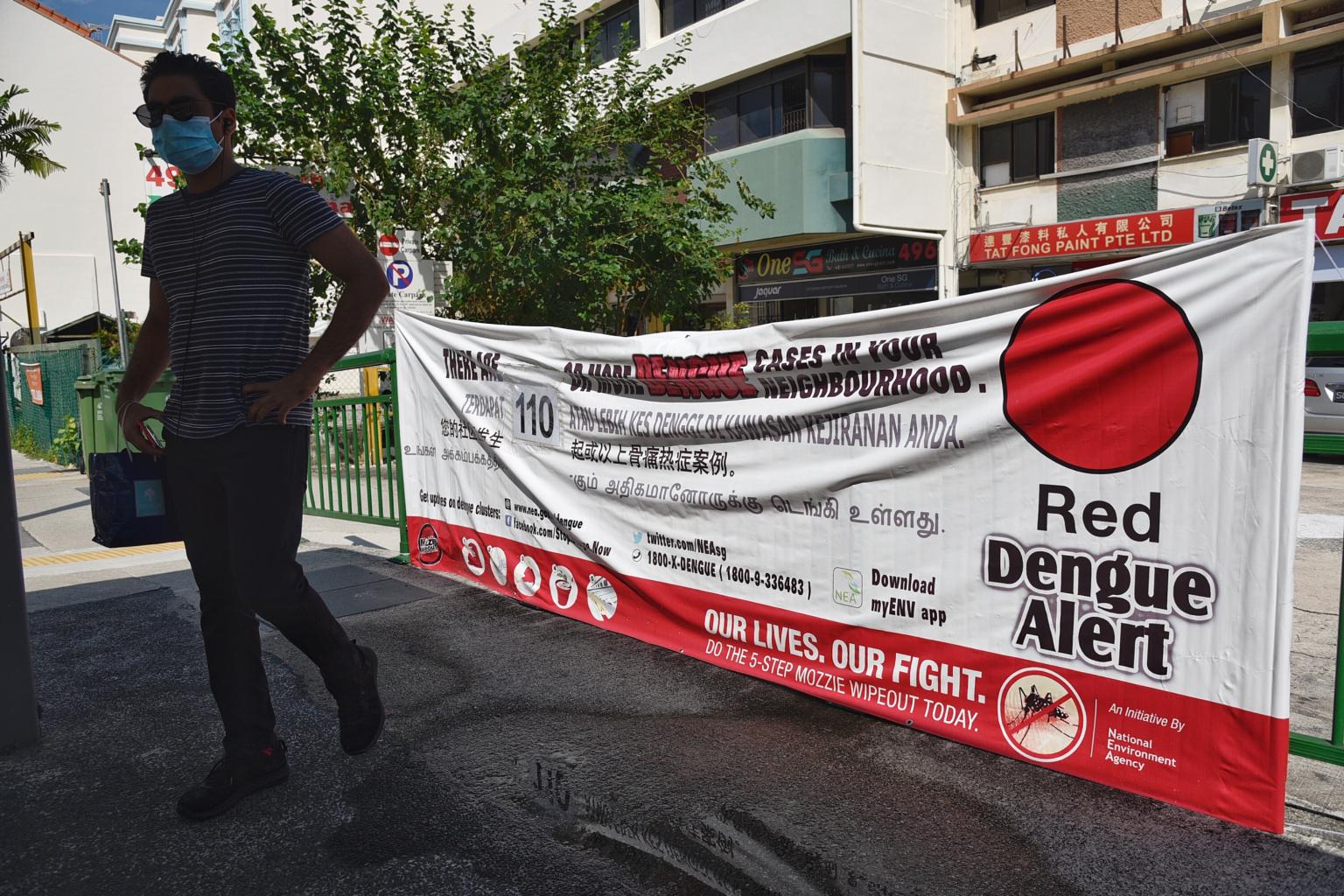Record number of 1,158 dengue infections last week as outbreak shows no signs of slowing
Sign up now: Get ST's newsletters delivered to your inbox

The total number of infections for the year as at 3pm on June 15 was 11,166 - more than the total for most years.
ST PHOTO: DESMOND WEE
Follow topic:
SINGAPORE - The number of weekly dengue infections has soared past the 1,000 mark for the first time in Singapore's history.
The 1,158 cases last week is a huge 33 per cent increase over the 870 people infected in the previous week.
The total number of infections for the year as at 3pm on Monday (June 15) was 11,166 - more than the total for most years.
Over the past 50 years, annual dengue infections have exceeded this number only six times.
The National Environment Agency (NEA) said it is possible that the total number of dengue infections for this year could set a new record high, exceeding the 22,170 cases in 2013, which recorded the biggest outbreak to date.
There are currently 221 active dengue clusters, mostly in the eastern half of the country.
The biggest cluster is in Woodleigh in Potong Pasir, with 209 people infected. It is one of seven clusters with more than 100 people infected.
As June to October is the peak dengue season, with the hot and wet weather spurring mosquito breeding, the weekly number could continue to rise.
The NEA said on its website: "Immediate action must be taken to break disease transmission."
It added that it "urgently seeks the community's support to ensure that their homes (including common corridors where domestic items, such as potted plants and pails, are kept) and gardens in their compounds are free from mosquito breeding, and to use aerosol insecticide spray and mosquito repellent to protect themselves and their families."
It said that among the big clusters, as much as 84 per cent of instances of mosquito breeding were found in homes, rather than at constructions sites or common areas.
Dr Chia Shi Lu, head of the Government Parliamentary Committee for Health, said the situation is very worrying.
"With more people staying at home and with so many enforcement officers - I personally had three enforcement checks during the two months of circuit breaker - one would expect there to be fewer unattended collections of water (that allow mosquitoes to breed in)," he said.
Fellow GPC member Tin Pei Ling said only a little water is needed so "it is not difficult to overlook breeding spots even in indoor settings".
The NEA said that during the circuit breaker months of April and May, it found five times the number of breeding sites in homes, and twice the usual number at construction sites.
Generally, only one in four people infected with the mosquito-borne virus is sick enough to seek medical help. Of them, one in five would require hospital care.
Generally, only one in four people infected with the mosquito-borne virus is sick enough to seek medical help. Of them, one in five would require hospital care.
This means that close to 45,000 people have been infected this year and more than 2,200 would have been hospitalised.
Twelve people have died of dengue this year.
Common symptoms for dengue include nausea and vomiting, muscle, joint and bone pain, as well as pain behind the eyes, and a red rash.
People with the more severe dengue haemorrhagic fever may have bleeding gums and nose, as well as internal bleeding.
According to the United States Centres for Disease Control and Prevention, infants and pregnant women are more at risk of the severe form of dengue.
The risk of severe illness is also higher for people who have had previous dengue infections.
There are four strains of dengue virus. Getting infected protects against only the strain causing the infection, and not the others.
The rise since the end of last year of the DenV-3 strain, which has not been dominant here in three decades, could have contributed to the high number of infections this year, as few people would have immunity against it.

